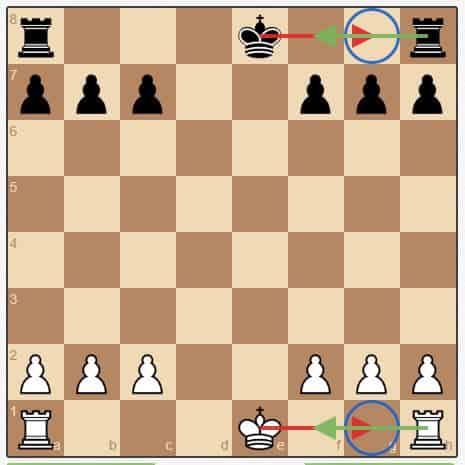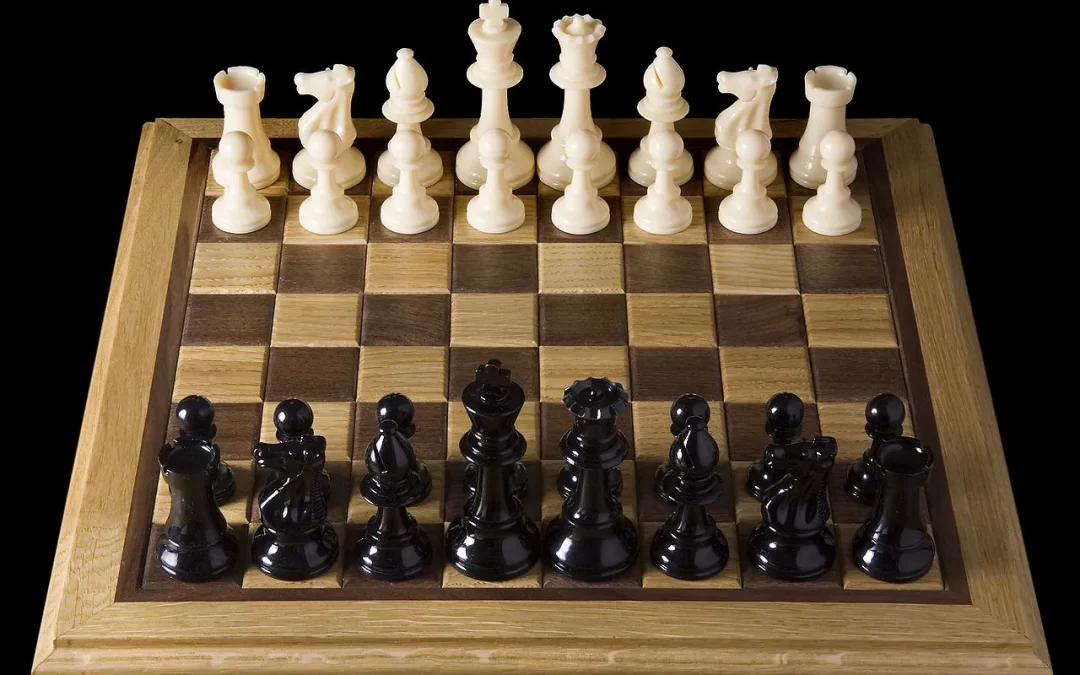Hello, young chess warriors!🌟Today’s adventure is all about protecting your king—the most important piece on the board! By mastering these defensive tips, you’ll learn how to keep your king safe and become the ultimate defender. Let’s dive in!
Imagine the chessboard setup as a mighty kingdom, with your king as the ruler! Although the king can only move one square at a time, making him slow, he’s the key to victory, so protecting him is essential. That’s why he needs strong defenders—your pawns, knights, bishops, and rooks—to guard him from enemy attacks.
The Castle Defense: Building a Fortress🏰
One of the best ways to protect your king is to castle early in the game! Castling is a special move that shifts your king closer to the corner and brings your rook to his side, creating a fortress of defence around him. Not only does casting keep the king safer, but it also positions your rook to support both defence and attack.

King-side castling – chessable
How to Castle:
1. No pieces should be between your king and rook.
2. Neither the king nor the rook involved in castling should have moved yet.
3. The squares the king moves over should be free from enemy attacks, so the king is safe.
These rules make casting a powerful defensive move while ensuring your king isn’t exposed to immediate threats.
Pawns: The chess King’s First Line of Defense🛡️
Your pawns are like loyal soldiers guarding your king. Keeping a line of pawns in front of him creates a solid wall that can block enemy attacks. Avoid moving too many pawns in front of your king, as this can create gaps for opponents to sneak through and make your king more vulnerable.
Pawn Structure
Maintaining a good pawn structure is essential for defense. When your pawns form a solid, unbroken line, it’s much harder for opponents to find openings near your king. On the other hand, gaps or isolated pawns can weaken your defence, so think carefully before moving them!
Don’t expose your king!
Imagine your king walking into battle without armour—that’s what it’s like if he’s left open without protection. Keeping your king behind pawns and other pieces reduces his risk of getting caught in the enemy’s crossfire.
Quick Tip:
Avoid moving your king to the centre of the board early in the game, where he’s much more exposed. The centre is typically a dangerous place for the king until the endgame, when fewer pieces are on the board.
King Safety Throughout the Game

king safety – chessfox
Opening and Middle Game: Focus on keeping the king safe behind pawns, casting early, and avoiding moves that leave him exposed.
Endgame: As pieces are traded off, it becomes safer for the king to move toward the centre, where he can help attack and defend. Knowing when to bring the king forward is part of strong endgame strategy.
Recap:
Here’s a summary of how to keep your king safe:
Castle early to create a fortress.🏰
Keep your pawn structure strong in front of your king.🛡️
Avoid exposing your king—keep him behind pieces and consider his position in each phase of the game.
Quiz Time!🤔
Ready to test your knowledge? Let’s see how much you remember!
1. What’s the best move to protect your king early in the game?
a) Moving the king forward
b) Castling
c) Moving all the pawns
2. Why shouldn’t you move too many pawns in front of your king?
a) It creates gaps for the opponent.
b) The pawns get tired.
c) It’s good luck.
3. Where is the safest place for the king during the opening moves?
a) In the center
b) On the edges of the board
c) Tucked behind pawns
Answers:
1. b) Castling
2. a) It creates gaps for the opponent.
3. c) Tucked behind pawns
Keep practicing and protecting!
Every great chess player knows how to keep their king safe. Practice these moves, focus on your pawn structure, and you’ll be ready to defend like a pro!🎉
Parents: If your child is excited about learning more, consider Premier Chess Academy for fun and interactive chess lessons that build essential skills!🌟♟️


Recent Comments